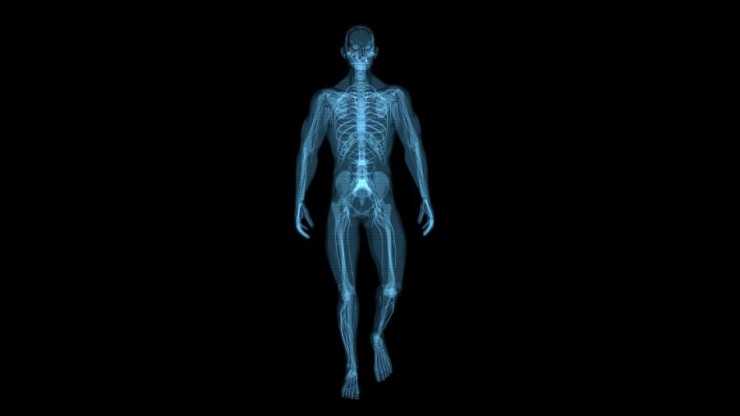
The Whole Body Bone Scan is a nuclear medicine imaging technique designed to evaluate the entire skeleton for various conditions affecting the bones.
Whole Body Bone Scan in India with Cost
Whole Body Bone Scan: A
Comprehensive Insight into Skeletal Health
In the realm of diagnostic imaging, the Whole Body Bone Scan stands as a powerful tool for assessing the overall health and integrity of the skeletal system. This comprehensive guide aims to elucidate the significance, procedure, and applications of the Whole Body Bone Scan, offering a detailed understanding of its role in modern healthcare.
Introduction
The Whole Body Bone Scan is a nuclear medicine imaging technique designed to evaluate the entire skeleton for various conditions affecting the bones. It is a valuable diagnostic tool for detecting bone abnormalities, including fractures, tumors, infections, and other skeletal disorders.
Understanding Whole Body Bone Scan
Radiotracer Administration:
The procedure involves the injection of a small amount of radioactive material, usually technetium-99m methylene diphosphonate (Tc-99m MDP). This radiotracer has an affinity for bone tissue, making it an excellent marker for identifying changes in bone metabolism.
Gamma Camera Imaging:
A specialized gamma camera is used to capture images of the distribution of the radiotracer in the skeleton. The camera detects gamma rays emitted by the radioactive material, creating detailed images of the bones.
Importance in Bone
Imaging
The Whole Body Bone Scan holds paramount importance in various aspects of bone health:
Fracture Detection: Essential for
identifying fractures, stress fractures, or other traumatic injuries throughout
the skeleton.
Tumor Localization: Aids in
locating and staging bone tumors, including primary bone cancers or metastases
from other cancers.
Infection and Inflammation: Helps detect
bone infections, inflammatory conditions, or abnormalities indicative of bone
disorders.
Preparation for Whole
Body Bone Scan
Preparation for a Whole Body Bone Scan typically involves:
Hydration: Adequate hydration is encouraged
to facilitate the distribution of the radiotracer.
Medication Adjustments: Temporarily
stopping or modifying specific medications that could impact the scan.
Procedure: Mapping
Skeletal Health
Radiotracer Injection: The patient receives the
radiotracer intravenously, allowing it to circulate and be absorbed by the
bones.
Uptake Period: The radiotracer is given time to
accumulate in areas of bone with increased metabolic activity.
Gamma Camera Imaging: The gamma
camera captures detailed images of the entire skeleton, showcasing areas of
normal and abnormal radiotracer uptake.
Assessment Areas in
Whole Body Bone Scan
The Whole Body Bone Scan is employed to assess various aspects of skeletal health, including:
Fracture Detection: Identifying
fractures or stress injuries throughout the skeleton.
Tumor Localization: Aiding in the
localization and staging of bone tumors.
Infection and Inflammation: Detecting signs
of bone infections, inflammatory conditions, or abnormalities indicative of
bone disorders.
Benefits of Whole Body
Bone Scan
Comprehensive Assessment: Offers a comprehensive
evaluation of the entire skeleton in a single imaging session.
Multi-Condition Detection: Enables the
detection of various bone conditions, including fractures, tumors, infections,
and inflammatory disorders.
Treatment Planning: Assists
healthcare providers in planning appropriate treatments based on the scan
results.
Risks and Considerations
The Whole Body Bone Scan involves exposure to low levels of radiation. However, the benefits of accurate skeletal assessment generally outweigh the associated risks.
Clinical Applications
Whole Body Bone Scans find applications in various clinical scenarios, including:
Trauma Evaluation: Crucial for
assessing the extent of skeletal injuries in traumatic events. Oncology: Aids in staging and monitoring bone cancers and metastases.
Expert Perspectives
Nuclear medicine specialists collaborate with orthopedic surgeons and oncologists to interpret Whole Body Bone Scan results, providing comprehensive insights into skeletal health.
Technological Advancements
Continual advancements in imaging technology contribute to the refinement of Whole Body Bone Scans, enhancing image resolution and diagnostic capabilities.
Patient Experience
While Whole Body Bone Scans involve exposure to radiation, they are generally well-tolerated by patients. The procedure provides valuable information to healthcare providers without invasive measures.
Conclusion
In conclusion, the Whole Body Bone Scan stands as a pivotal imaging modality, offering a comprehensive evaluation of skeletal health. Its applications in fracture detection, tumor localization, and the assessment of various bone conditions contribute to advanced and personalized healthcare for individuals with skeletal concerns.
Frequently Asked Questions (FAQs) related to Whole Body Bone Scans
1. How long does a Whole Body Bone Scan take?
The procedure typically takes about 1 to 2 hours. This includes the time for the radiotracer to circulate in the body and the imaging process.
2. Is a Whole Body Bone Scan painful?
No, the scan itself is not painful. The injection of the radiotracer might cause slight discomfort, similar to any routine injection.
3. Are there any side effects of the radiotracer used in a Whole Body Bone Scan?
The amount of radiation used is minimal, and side effects are rare. Allergic reactions to the radiotracer are extremely uncommon.
4. Can pregnant or breastfeeding women undergo a Whole Body Bone Scan?
Pregnant or breastfeeding women are typically advised against undergoing Whole Body Bone Scans due to the use of radioactive material. In such cases, alternative imaging methods may be explored as a safer option.
5. How often can a person undergo a Whole Body Bone Scan?
The frequency of scans depends on the individual's medical condition and the recommendation of the healthcare provider. It is not typically done on a routine basis.
6. Are Whole Body Bone Scans covered by insurance?
In numerous instances, insurance might include the expenses associated with a Whole Body Bone Scan, particularly if it is considered medically essential. It is recommended to verify this with the insurance provider in advance.
7. Is there any special preparation required before a Whole Body Bone Scan?
Generally, there is no specific preparation. However, staying well-hydrated is recommended to facilitate the distribution of the radiotracer.
8. Can children undergo Whole Body Bone Scans?
Yes, Whole Body Bone Scans can be performed on children. The dosage of the radiotracer is adjusted based on the child's weight.
9. Are Whole Body Bone Scans only for detecting cancer?
No, in addition to cancer detection, Whole Body Bone Scans are used to identify fractures, infections, and various skeletal disorders.
10. How soon can results be expected after a Whole Body Bone Scan?
The time taken to receive results may vary. In many cases, the interpreting physician provides a report to the referring healthcare provider within a few days.
11. Are there any restrictions after undergoing a Whole Body Bone Scan?
There are typically no specific restrictions. Patients can resume normal activities and follow their regular diet unless advised otherwise by the healthcare provider.
12. Can Whole Body Bone Scans be performed on individuals with claustrophobia?
Yes, the scan is non-invasive and does not involve confined spaces, making it generally suitable for individuals with claustrophobia.
These additional FAQs aim to provide more insights into the considerations, procedures, and common queries associated with Whole Body Bone Scans. Always consult with healthcare professionals for personalized information based on individual health conditions.
(0)
Login to continue



